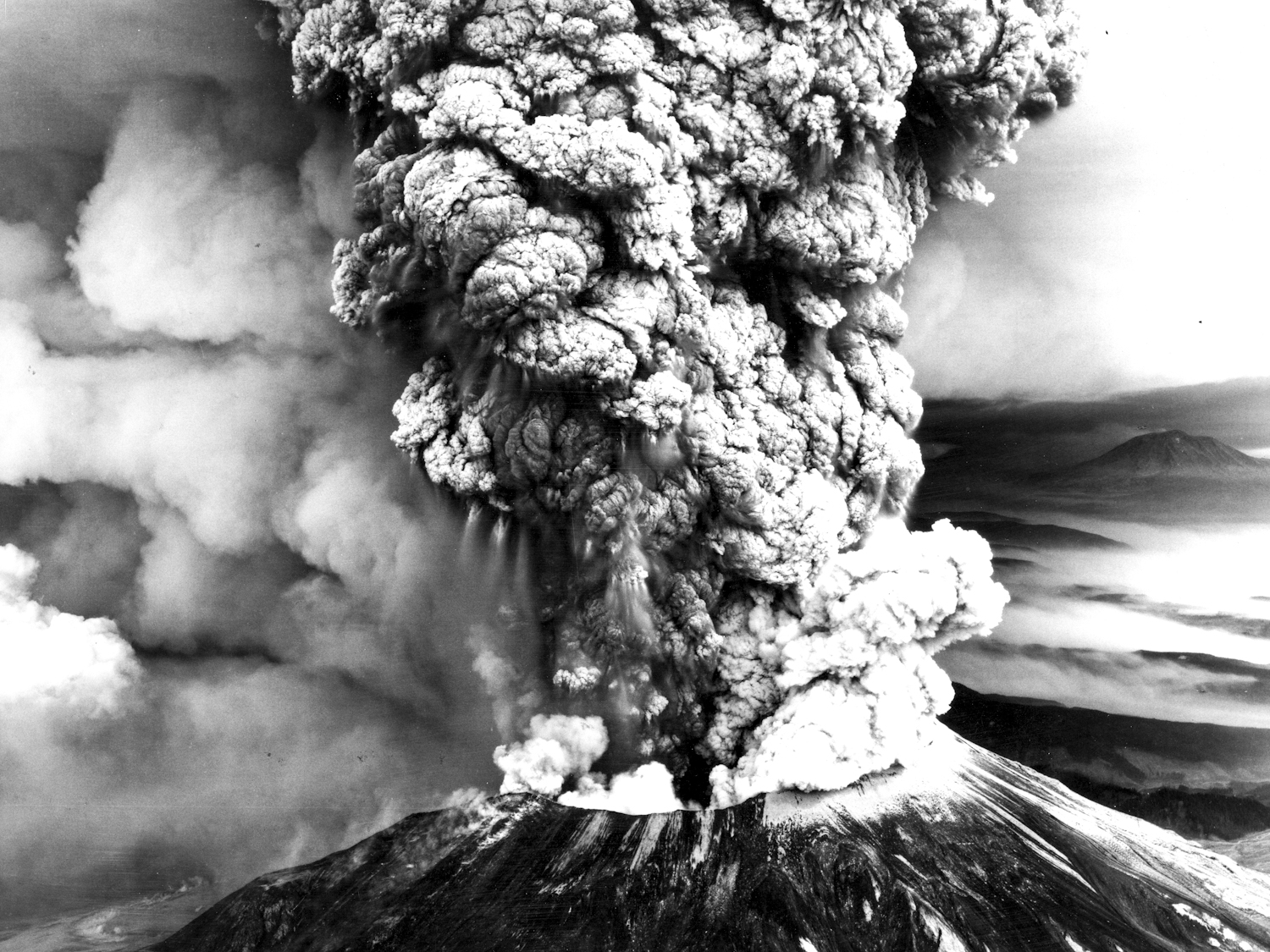41 Years Ago Today, Volcanic Hazards Awareness Expanded With A Boom

I’m middle-aged now, but back then I wasn’t even in kindergarten yet. That sunny May day, I was inside, glued to a television screen filled with a roiling gray haze of volcanic ash. Mount St. Helens had erupted with spectacular violence after a couple of months of unrest.

Mount St. Helens in eruption on May 18, 1980. Mount Hood, a Cascades sibling, looks on in the background. Credit: USGS
There was only one thing I could do once the shock of it wore off: I promptly grabbed construction paper and crayons and drew the volcano a get well card. She looked like it hurt.
It would be a couple of years before I began to grasp the scope of what had happened, and decades more before I knew how much the 1980 awakening, eruption, and aftermath had advanced the science of volcanology.
Mount St. Helens gave us a unique crash course in how explosive eruptions work. She was right there in one of the most scientifically inclined countries in the world, with a ready-made geological survey, a budget for sophisticated monitoring equipment, and a lot of geologists literally willing to risk their lives to study her. We could get there by a short drive along paved roads. She was close enough to population centers to be wildly dangerous, but that proximity made her ideal as a subject.

Mount St. Helens in eruption on May 18, 1980, looking toward another Cascades sibling, Mount Adams. Charred branches and pine cones were carried on the blast cloud from her devastated forests all the way to his slopes. Credit: USGS
The lessons we learned there made us scramble to assess the hazards of St. Helens’s Cascades siblings, many of whom are active and some of whom are capable of far worse destruction due to the cities and towns in their shadows. We were able to take the lessons we learned there and apply them at other dangerous volcanoes around the world. Mount St. Helens claimed 57 lives that May morning, but she has saved countless more.
She can lay credible claim to being the mother of modern volcanic hazard assessment. And she’s not done teaching us yet. Every year, she shows us how extraordinarily resilient volcanic ecosystems are. She’s already given us a demonstration of a dome building phase. Someday, she’ll rise as a smooth cone again, before once again blasting herself apart. In her cycles of destruction and rebirth, she manifests the ageless power of the Earth.

A rare color photo of Mount St. Helens in eruption on May 18, 1980. Snow-clad Mount Hood gleams in the distance. Credit: USGS
I have one more card to make her: a thank you card.
